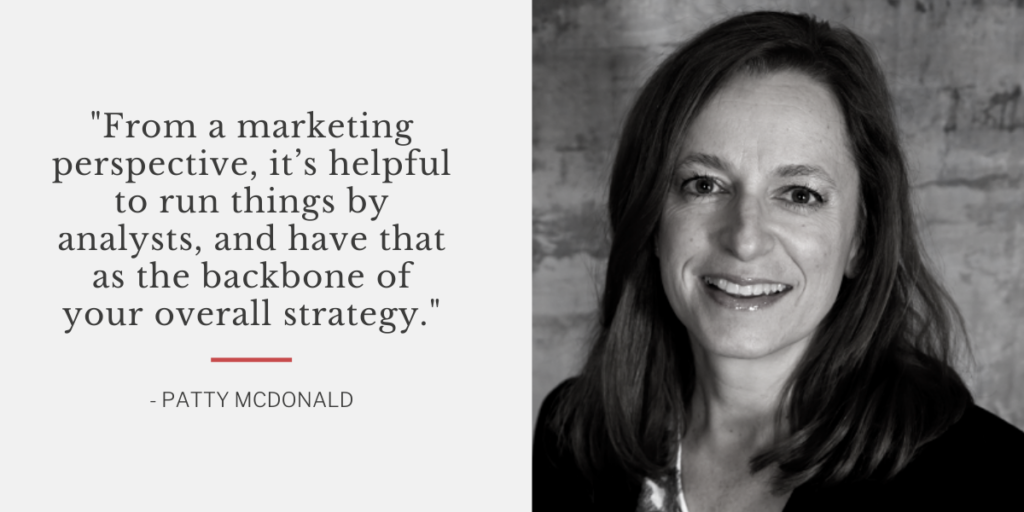For some B2B organizations, the risk of becoming an echo chamber when it comes to company strategy is real. This month, during our webinar on analyst relations, we discussed how analysts can provide third-party feedback to help companies create a solid communications plan.
Our host Catherine Seeds was joined by Patty McDonald, global solution marketing director at Symphony RetailAI and Steve Rowen, managing partner at Retail Systems Research (RSR).
In her role, Patty ensures Symphony RetailAI, which is a client of Ketner Group’s, addresses the retail supply chain market with the right products, services and communications. At RSR, Steve helps current retailers make more strategic decisions about the role of tech in their enterprise.
Our discussion provided the inside track of what industry analysts are looking for and how to build long-term relationships.
What is the right time for analyst relations?
According to Steve, the sooner the better. Engaging with analysts does not need to be expensive and there’s truly no bad time for a discussion.

Patty agreed that “the best time is all the time. When you think about building solutions, it’s really important to vet out the tech and the messaging. From a marketing perspective, it’s helpful to run these things by analysts, and have that as the backbone of your overall strategy.”
What are analysts looking for in a briefing?
The best inquiries all quickly summarize the company’s story. “We want to know what problems you’re trying to solve with your tech. That makes for a great conversation,” Steve said. “Don’t show me how the technology works right away; if I want to know, I’ll ask.”
Patty recommended technology companies identify a goal ahead of time. “Even before we have a conversation with an analyst, I want there to be mutual understanding of what I’m looking to get out of the conversation.”
Most importantly, both Steve and Patty emphasized the importance of being honest when it comes to what your technology can do and what you have planned for the future.
How can companies set the stage during a briefing?
“Establish objectives of a briefing early,” Steve said. He identified this as something Ketner Group, or another communications firm, can help with. In the beginning of the call, introduce the attendees, remind everyone what the goals of the discussion are and summarize the objectives.

For example, “We’d like to learn more about RSR. We’d like to introduce our new product, X. And we’d like to get perspective on how to bring the product to market.” For more tips on briefing best practices, check out these resources from RSR.
How do you nurture relationships with analysts?
When you think about your long-term relationship with an analyst, remember that they can provide another informed voice in the room–and you can never have enough smart people.

“As you’re getting your marketing materials together, getting perspective on even a word or two in your messaging can be valuable,” said Steve. Patty agreed that advice is helpful, particularly when using analysts as external validation for an internal idea.
Patty also reminded attendees that analyst relationships go both ways. Recently, she’s had a lot of fun working with analyst firms on their thought leadership. “Personalized Promotions: The Key to Bigger Baskets and More Frequent Trips,” was a joint report put out by Symphony RetailAI and RSR.
Keep the conversation going
Interested in learning more about how to make analyst relations a core part of your communications strategy? We’d love to see how we can help! Contact us to set up a free, thirty-minute consultation.
Stay in touch with Patty and Steve by connecting with them on LinkedIn: Steve Rowen and Patty McDonald.
If you want to catch the full conversation with Catherine, Patty and Steve, feel free to view the webinar on demand. Our next KG Connects event will take place in October. Stay tuned!


